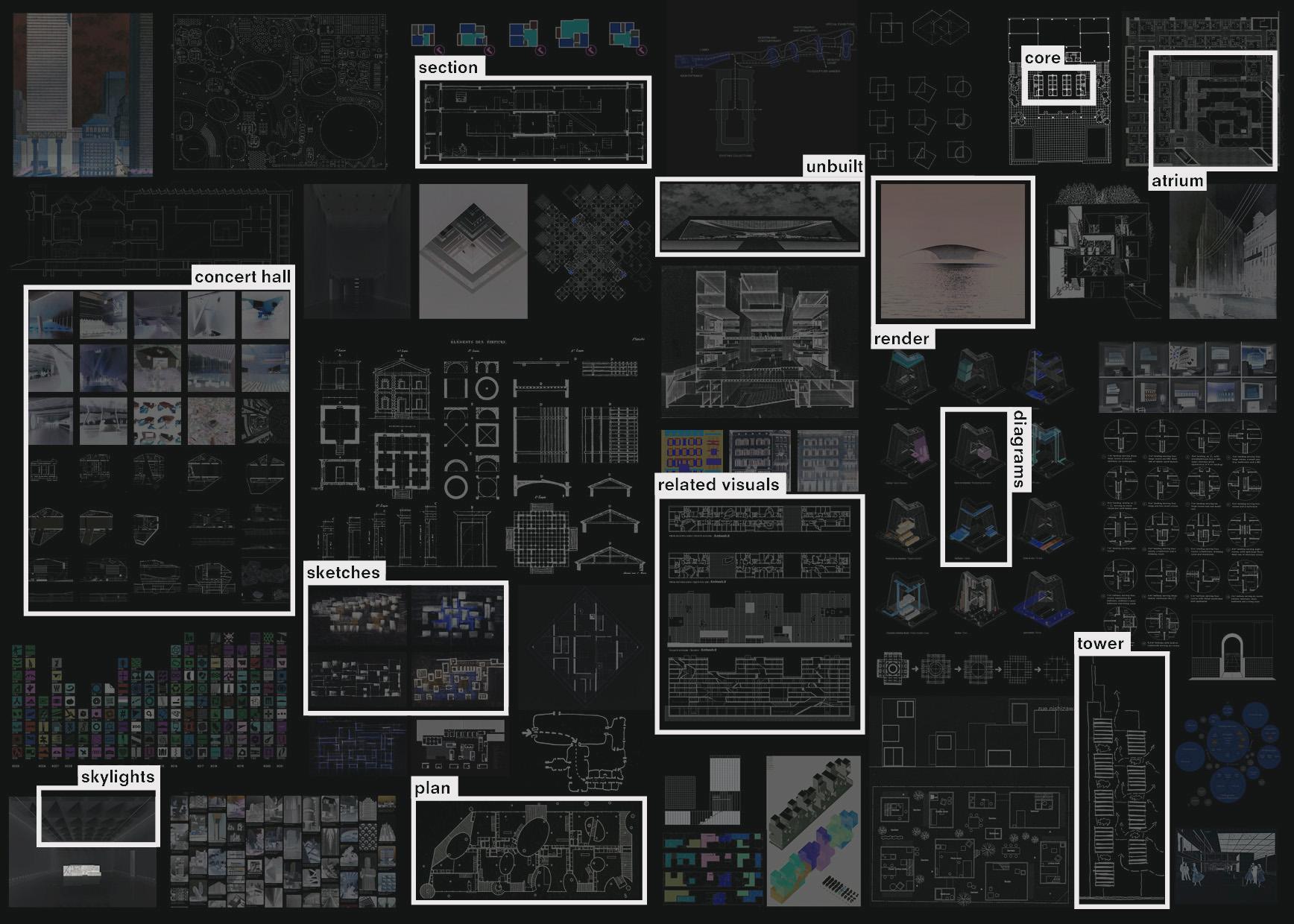PhD Research: Towards Computer Vision for Building Design
PhD Researcher: Marija Mateljan
At the intersection of architectural design, computer vision and media theory, the research explores the interfaces between architectural representation, design thinking and the digitalisation of cultural techniques in the context of the rapidly developing artificial intelligence technologies resulting from the abundance of data. Considering the importance of visual representation for design thinking and communication, the research investigates how digitally stored architectural visuals such as drawings, diagrams, renders and photographs could be perceived and analysed by the state-of-the-art computer vision (AI) technologies to enable architects to effectively utilise their expanding digital archives in order to improve design workflows and gain novel insights.
The research is based on the premise that in a digital, coded world, diverse levels of understanding can be attained by examining various forms of representation, including numbers, words, and pictures. By integrating these various forms of representation into cultural techniques, societies can effectively express, communicate, and document their cultural heritage, better understand cultural practices, and preserve knowledge for future generations. Therefore, to reposition architecture in the digital age and to fully comprehend the potential of artificial intelligence technologies for architectural design, it is necessary to deconstruct the building by deconstructing its representations in which design information is encoded. Rather than retrospectively decoding design information, the research methodology involves reverse-engineering the design information through a comparative study of architectural visuals. The aim of the reverse-engineering methodology is to make explicit the functional, geometric and aesthetic aspects that architects consider in practice in order to identify new possibilities for computer vision techniques to expand designers' perspectives through methods of quantitative analysis.
Research follows a comparative analysis methodology where multiple visuals of the same type, mainly floorplans and sections are observed in groups and compared to examine similarities and differences between them in order to identify patterns and causal factors pertaining to the five design aspects: area, circulation, function, structure and envelope. Through the comparative analysis of orthographic projections, the research aims to fundamentally rethink the techniques of visual analysis which are integral to all design activities, from the development of initial spatial configurations to the alignment of various building details, and elucidate the fuzzy nature of architectural concepts that has often been overlooked in the computational approaches to architecture. By deconstructing and comparing pictorial building representations, the research aims to redefine the scope of design information in the age of computer vision and deep learning, thereby contributing to the interdisciplinary research efforts at the intersection of architecture and AI.
The intended output of the PhD research is an ‘Architectural Design Curriculum for a Learning Machine’, designed to help AI assistants develop the necessary knowledge, skills and competencies needed to become effective design partners in architectural practice.
Note: If you would like to connect with me to discuss my research or just to have a chat about architecture, computer vision or AI for design, please feel free to contact me via email, at M.Mateljan@tudelft.nl.
